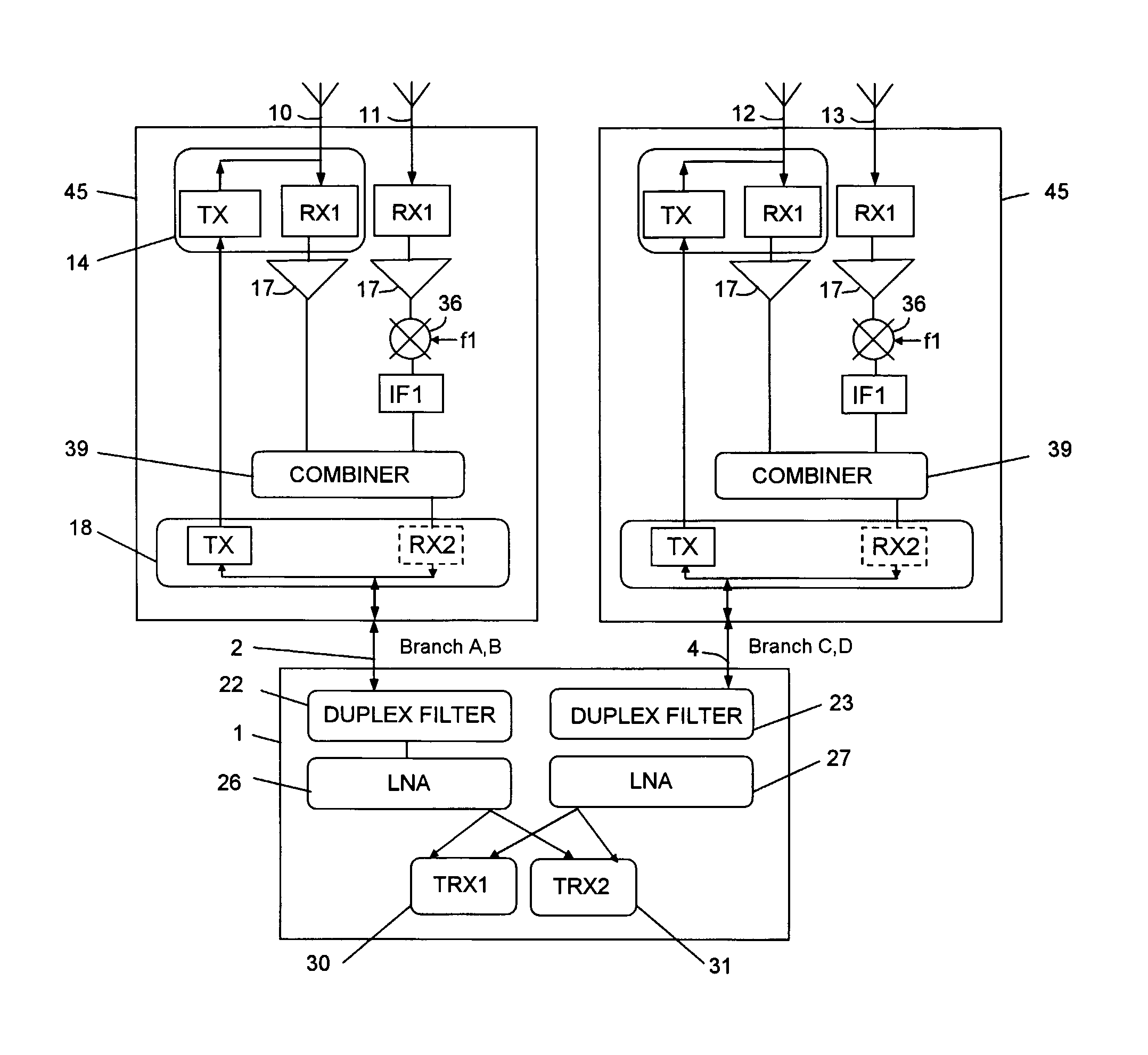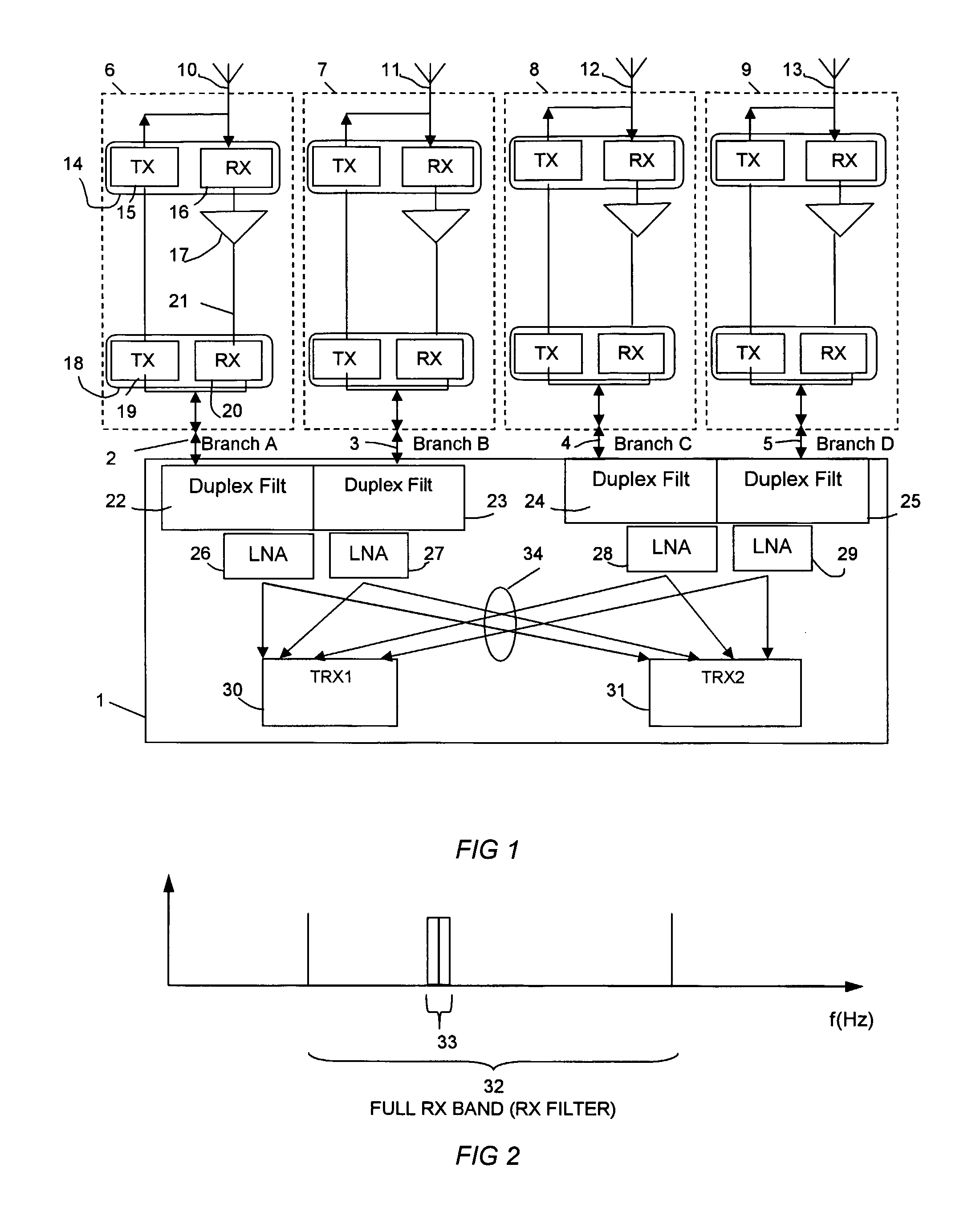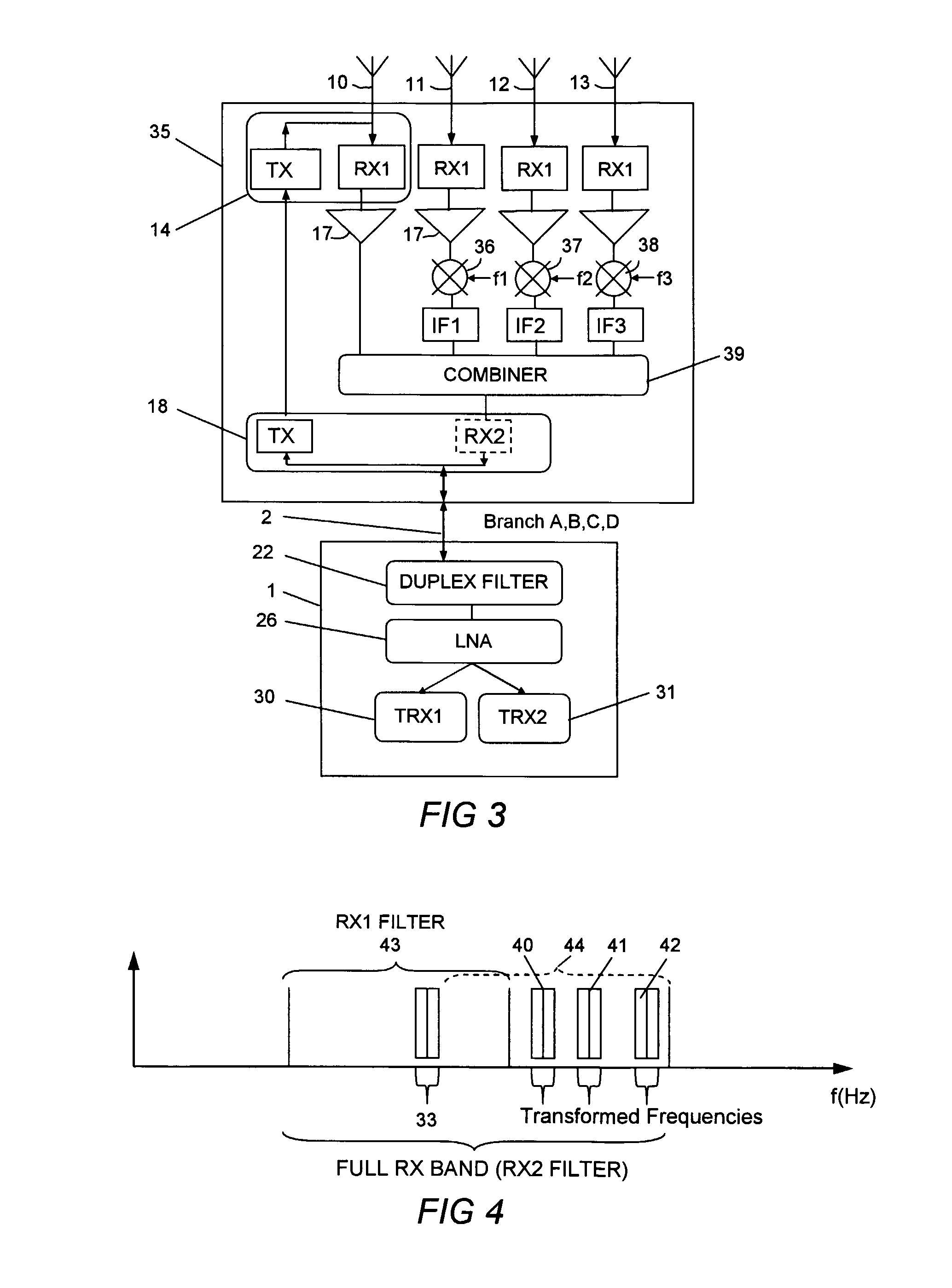Method device base station and site for reducing the number of feeders in an antenna diversity system
a technology of diversity and feeders, applied in diversity/multi-antenna systems, modulation, electromagnetic wave modulation, etc., can solve the problems of high cost of feeders, poor efficiency of feeders in each branch, and inability to meet the needs of each branch, so as to reduce the number of feeders
- Summary
- Abstract
- Description
- Claims
- Application Information
AI Technical Summary
Benefits of technology
Problems solved by technology
Method used
Image
Examples
Embodiment Construction
[0031]FIG. 3 illustrates an embodiment of the invention. Elements similar to those in FIGS. 1 and 2 bear the same reference designations. A novel tower mounted amplifier 35 comprises frequency converters 36, 37, 38, each one connected to a respective antenna 11, 12 and 13 in order to move the frequency of the received RF antenna signal to a respective non-used frequency by mixing the RF antenna signal with a respective reference signal f1, f2, and f3 of a predetermined frequency. The signal received on antenna 10 is not moved in frequency. The reference signal may be a continuous wave signal, CW signal, a signal from a local oscillator or any equivalent.
[0032]The reference signal does not occupy a frequency band. Accordingly, the signal definition given above does not apply to the reference signal. A frequency converter is a device which as input receive the RX antenna signal and mixes it with the reference signal in order to obtain a frequency translated signal on an intermediate f...
PUM
 Login to View More
Login to View More Abstract
Description
Claims
Application Information
 Login to View More
Login to View More - R&D
- Intellectual Property
- Life Sciences
- Materials
- Tech Scout
- Unparalleled Data Quality
- Higher Quality Content
- 60% Fewer Hallucinations
Browse by: Latest US Patents, China's latest patents, Technical Efficacy Thesaurus, Application Domain, Technology Topic, Popular Technical Reports.
© 2025 PatSnap. All rights reserved.Legal|Privacy policy|Modern Slavery Act Transparency Statement|Sitemap|About US| Contact US: help@patsnap.com



